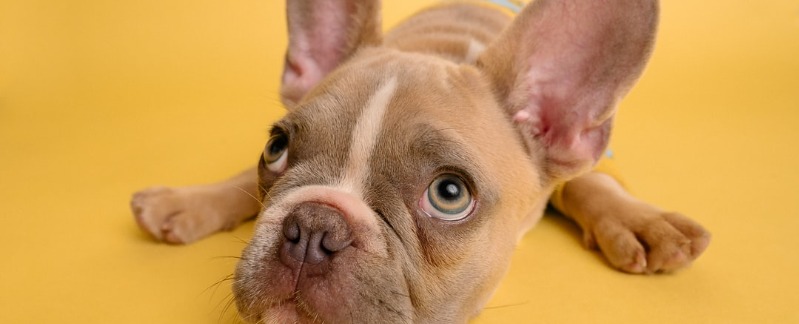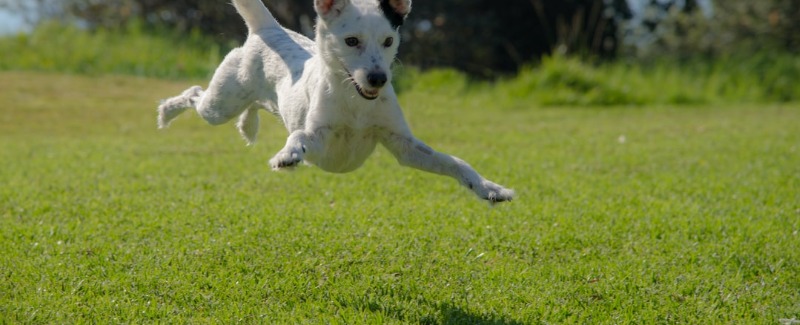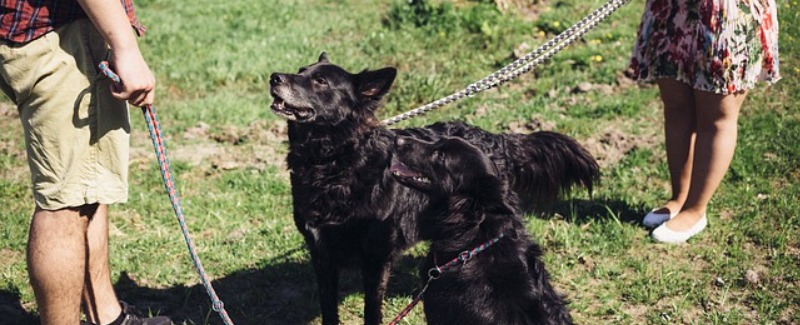Ahh, the settle command. This command, once mastered, is your dog’s ticket to freedom. It means that he can be contained in a designated area without actually being contained by a physical barrier. Instead of being locked away from the action when you have visitors, he can be part of it, or at least a spectator on the sidelines. He can accompany you anywhere because he can be trusted to calmly and quietly contain himself until you free him to do otherwise.
Settle or Down-stay?
Contents
Although the settle and down-stay commands are similar in that you expect your dog to lie down, that’s pretty much where the similarity between the down-stay and the settle ends. The way you teach settle is completely different, as is what you expect from your dog when he performs it.
What Settle Means
Settle means that your dog should go either to a preassigned spot (more about assigning a spot in a minute), or a temporary place you designate, and make himself comfortable until you release him. He can flip from side to side, scratch real or imaginary fleas, or chew a bone. He can even get up, turn around, and lie back down again, as long as he doesn’t leave the area. The duration of the settle can be very short, (say, just a few minutes), or up to 30 minutes or more. As long as your dog doesn’t leave the designated area, and quietly contains himself, he can do pretty much what he wants. You’re going to indicate to him early on in training that you prefer that he lie down, but after that it’s all on him.
Teaching the Settle Command
There are two parts to teaching your dog what settle means. The first part is teaching her that finding and staying on her spot is what you want, and the second part is encouraging her to lie down and relax for the duration of the settle.
Teach Your Dog to Find the Settle Spot
Start by setting up one of your dog’s settle spots (for this exercise, a mat works best) before you bring your dog into the room. Put the mat anywhere on the floor you want, and put a couple of treats in the middle of it. Bring your dog into the room (no leash is necessary) and stand near the mat. As soon as your dog investigates the mat (make sure he is actually stepping on it), CR/treat, then release your dog (your stay release is fine) and pick up the mat. Put it down somewhere else in the room and put another treat on it. Again, when your dog steps on the mat, CR/treat, release, and move the mat again. Repeat until your dog is rushing to get on the mat as soon as you put it down.
Over the next several training sessions, put going to the mat on command by pointing at the mat and saying “Settle” (or “Go to bed,” or whatever you want to call it) before you let your dog step on it and CR/treat. Gradually raise your criteria so your dog has to have all four feet on the mat before CR/treating. If he steps off the mat before you release him, pick the mat up and put it down again somewhere else and work on gradually building duration in the next training sessions. When he immediately goes to the mat when you give your command and stays on it for at least 20 seconds in any position without any extra help from you, you’re ready for the next step, getting comfortable.
It’s Hard to Wait!
To start, make yourself comfortable in a chair or on the couch, with something to occupy your attention while you wait, like a book, the paper, or TV. Put the mat that you’ve been working with just to the side of where your feet will be when you’re sitting. When your dog goes to check out her mat, praise her and drop a couple of treats on it. Step on the leash with both feet, giving your dog just enough room to barely stand on the mat comfortably. Have a seat yourself, and wait. Ignore anything your dog does, except when she lies down. When she does, say “Settle, good settle” and give her a couple of treats before you ignore her again. If she continues to lie down calmly, wait a few seconds, reward her again, and release her.
Some dogs will not appreciate being restrained and will kick, buck, and generally throw a temper tantrum. The only thing that’s important is that you keep your feet on the leash, ignore the rodeo, and wait for your dog to give up and lie down. The moment your bucking bronco hits the deck, reward and release. She’ll figure out quickly that it’s the calm behavior that’s getting rewarded, not the wild behavior. You’ll be using a couple of practical, around-the-house settle exercises to build duration and commitment even when you’re not right next to her.
Whether it takes twenty seconds of waiting or twenty minutes for her to lie down that first time, your dog will eventually lie down if you hang in there with her. The time that it takes for her to lie down will get shorter each time you practice, until she goes right to the mat and lies down. When that happens, have a party and quit for that session. Move to a variable reinforcement schedule as soon as she’s regularly going immediately to her mat and lying down when you give her the settle command. Sometimes release her immediately; other times make her hold it for several seconds or more, gradually working her up to a minute before you reward and release.
The Use of Settle
The more you use settle, the more uses you’ll find for it. From letting the furnace repairman go about his work unassisted by your “helpful” dog, to waiting for your dog’s appointment with the vet, to having lunch at sidewalk café, settle is useful in practically any situation. You can use settle to contain your dog when you have guests who don’t necessarily adore being up close and personal with dogs, without actually having to put your dog in his crate or another room. Who knows, maybe they’ll even change their minds about how they feel about dogs when they see a dog can be well behaved! Little League games, backyard barbecues, relaxing with a book in the park — anywhere that you want your dog with you but under control, is a great place to use settle.
The Settle Spot
Although you may have several of each type, there are two basic types of settle spots. The first type is a permanent spot that you use all the time in your day-to-day life with your dog. The second type of settle spot is portable, used for traveling with your dog (even a trip to the park is traveling). Both are easily identified by your dog no matter where he is.
Permanent Spots
Permanent settle spots are convenient areas around the house (or anywhere you regularly take your dog) that you can send your dog to chill out for a while. You might have one spot in the kitchen or dining room where your dog can go when you’re cooking or eating meals, another in the family room, one in the office, and still another in the bedroom. Anywhere that you hang out and want to allow your dog to hang out with you is a good place to designate a settle spot. Help your dog visually identify the areas (and be more comfortable) by providing something for him to lie on. You can use dog beds if you prefer, but a simple fleece mat will do just as well, especially for spots where he won’t spend that much time.
Where should the permanent settle spots be located? Anywhere you want them. Some may be very close to where you sit, like right next to your chair or under your desk. Others might be used to keep your dog out of household traffic lanes, like in a corner of the dining room. Wherever you want your dog to be in relation to the activity is up to you.
Portable Spots
Portable spots should be, well, portable. There are lots of cute and portable dog beds available, but anything that can easily be rolled or folded up, like a bath mat or towel, will do. It’s not a bad idea to have at least one of your permanent spots do double duty as a portable. With training, your dog will instantly recognize it no matter where he is and know what’s expected when he sees it and you tell him to settle. You can carry this portable spot literally anywhere for a visibly identifiable place your dog can call his own. In time, your dog will understand that anything you put on the ground and tell him to settle on is his settle spot.



